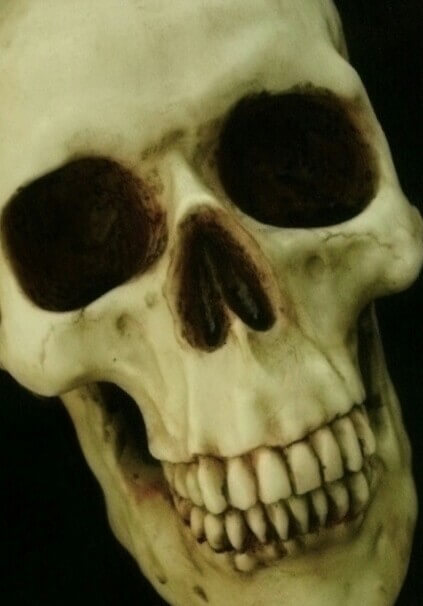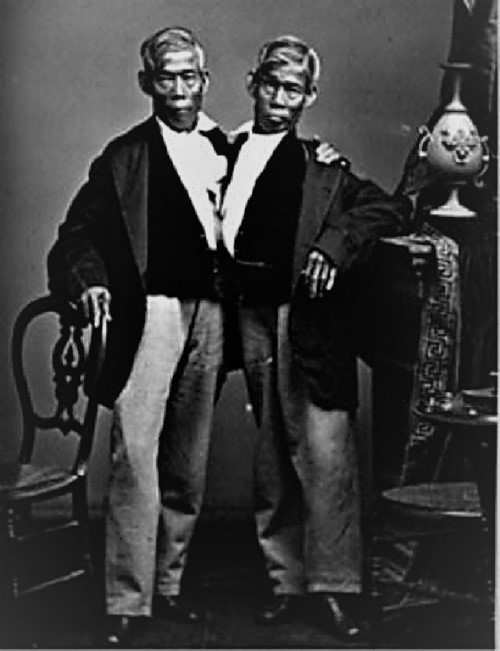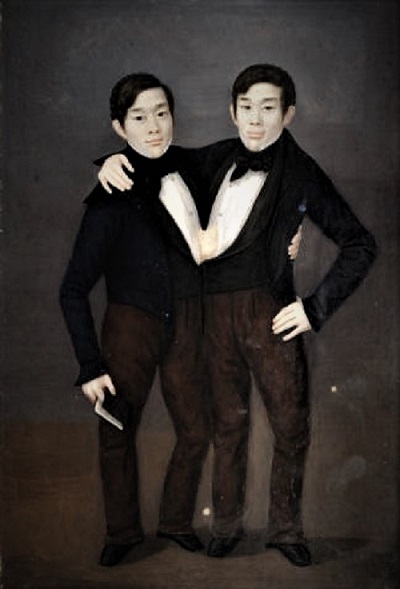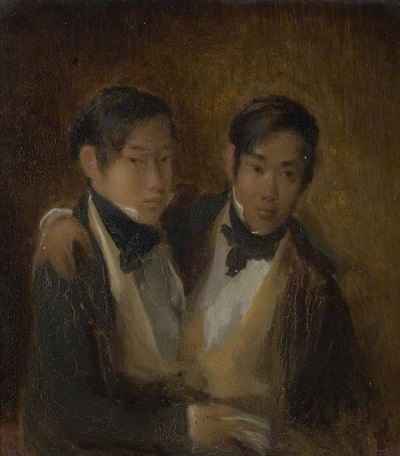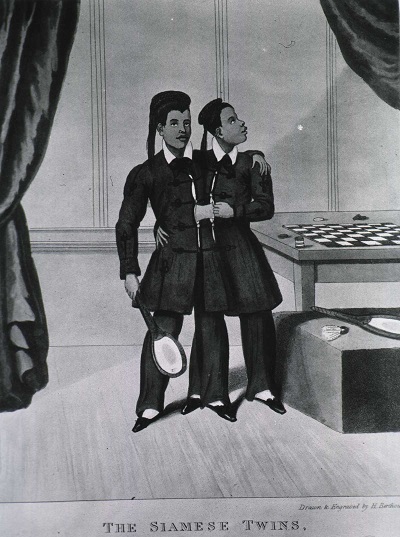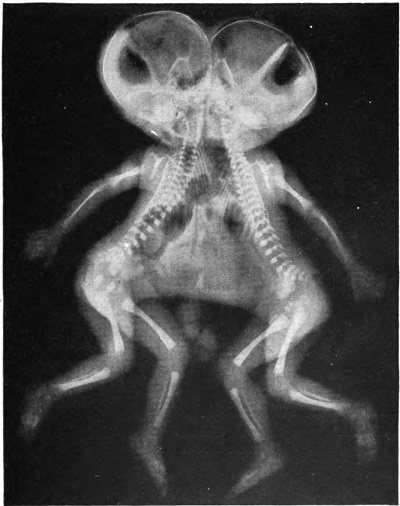Chang and Eng Bunker (May 11, 1811 – January 17, 1874) are widely considered the most prominent conjoined twins in history, and are even the source of the colloquial term “Siamese Twins”, though that terminology is largely frowned upon for being largely incorrect and racist.
Chang and Eng have one of the most interesting stories ever heard. They started as slaves but eventually became slave-owners, finally losing their slaves again after the Civil War. The full-story of Chang and Eng is not only interesting because of their unique biology, but also for the crazy and complicated lives led by the brothers.
Related article: https://odditiesbizarre.com/conjoined-triplets
Where is Siam?
The common phrase “Siamese twin”, derived from the Bunker brothers, is highly confusing and more than a little racist. Siam, now called Thailand, is a country in Southeast Asia surrounded by countries such as Laos, Cambodia, Myanmar, and Vietnam. The country has a rich history of ethnicities, and in fact, Chang and Eng were actually the sons of a Chinese man living in a small fishing village in Thai countryside. Within Siam, the boys were actually known as Chinese twins.
The boys were living quietly in Siam when an American businessman named Robert Hunter stumbled across them swimming in a river. Seeing a golden goose, Hunter started trying to convince the boys and their mother to let him take them to America and put them on exhibition. With the help of a ship captain named Abel Coffin, bribes to the king of Siam, and promises that the boys would help spread the fame of Siam, the boys were turned over. Coffin and Hunter brought them back to the U.S. and put them on tour.
Escaping Slavery
In 1829, the twins arrived in Boston. Not long after, they began extensively touring. They started in the U.S. but continued on to England and other parts of Europe. They were often exhibited as a “freak show”, dressed in generalized “oriental” clothing, and were made to do parlor tricks and other demonstrations of their conjoined abilities. They started to learn English and quickly picked up on English reading and writing.
By 1831, Chang and Eng were seeking freedom from Abel Coffin, who had assumed the role of their ‘father’. In reality, he treated the boys more like novelty pets, taking their profits from the shows and making them haul the luggage and equipment of the entire crew. The boys took their chance when Mr. Coffin took a long trip back to Asia. They wrote Mrs. Coffin a letter, telling her that they would be starting out on their own on their 21st birthday.
They struck out on their own, making money from their show. When Coffin returned from Asia he was furious, but could not force the return of the conjoined twins. With their newfound freedom, the twins traveled far-and-wide delivering their shows to audiences both large and small.
Becoming Slave Owners
By 1839, the brothers had saved up a considerable sum. They bought 150 acres of land in Traphill, North Carolina. Here, they built a small home and started to settle down. Eventually, there were accepted, more-or-less, by the community at large and began to be viewed less as a freakshow, and more as shrewd businessmen.
But acceptance into the local community, their small fortune, and the demands of their new homestead turned the former slaves into slave-owners themselves. Throughout their years at Traphill, the brothers would own and trade many slaves. Further, they often bought young children as slaves, selling them when they were more valuable as adults. By 1840, the Bunker twin’s fortune had expanded even larger.
The brothers leveraged their position in society to overcome negative speculations about them marrying into the local community. Though they suffered quiet racist criticism for it, the brothers ended up courting and marrying two sisters from the community, Adelaide and Sarah Yates. Chang eventually married Adelaide, while Eng married Sarah. With their massive fortune and increased social acceptance, the conjoined twins bought one of the largest properties in their county, a 650-acre plot known as Mount Airy. Here they lived for many years raising livestock and crops, while they were earning extra money through the interests of their invested fortune.
Chang and Eng Have Children and Die Together
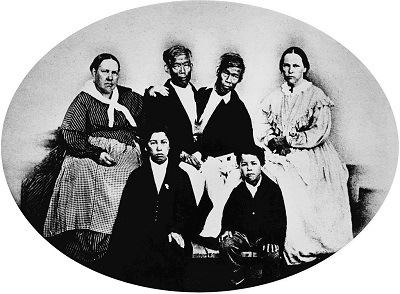
The Bunker twins with their wives and two of their sons. This photograph was taken in 1865 by Mathew B. Brady (one of the earliest photographers in American history).
Over the years the brothers ended up fathering a large number of children, over 20 in total. Through a strange arrangement apparently common among conjoined twins, Chang and Eng split their time between two separate homes. Each brother was the ‘master’ of his own home and would make decisions, make love to his wife, and otherwise command the body while the other brother would retreat into his mind. In the picture below, they can be seen with their wives and two sons.
In part because the brothers had purchased and built so many houses, and in part because they had fathered so many children, the years leading up to the Civil War were for them filled with trying to scrape together tours across the world. The brothers managed to earn some money through the trips, but as the Civil War came they found themselves on the wrong side of history. With their loyalties to the Southern aristocracies and the institution of slavery, the brothers loaned money to friends, neighbors, and the cause, but were repaid in Confederate currency.
After the war, the currency almost immediately lost the majority of its value. Further, all of the brother’s slaves were emancipated. Northern audiences no longer had sympathy for the men, who had clearly and openly supported the succession of southern states. Chang and Eng were also used as the subject of several cartoons, depicting the brothers as having conflicting ideas of slavery, and serving as a metaphor for the United States as a whole.
Eventually, Chang had a stroke and became mostly paralyzed. When Chang ultimately passed away, Eng died a few hours later. Some say it was because he so grieved the loss of his brother that his heart broke, while many doctors have pointed out that he was likely losing large amounts of blood to Chang’s dead body as their circulatory systems were connected.
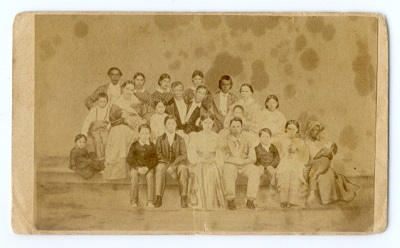
This is a family portrait from the 1860’s. It shows Chang and Eng Bunker with their wives and 18 of their 21 children. The portrait includes one of the 33 slaves on their plantation.
What was Chang and Eng’s actual medical condition?
Chang and Eng are known as xiphopagus conjoined twins, meaning they are united at the xiphoid process. This small piece of cartilage extends downward, just were your two lowest ribs meet together. This allowed Chang and Eng to move their arms and legs independently, and function as mostly separate, but united individuals.
How are Conjoined Twins Formed?
Conjoined twins are a type of identical twin, formed when the zygote or early embryo divides into multiple parts. However, with conjoined twins the embryo develops in a connected way, often being influenced by both embryos hormones and growth genes. When the conjunction is not life-threatening, conjoined twins like Chang and Eng can live a long time. In their case, they made it over 60 years together.
Conjoined twins have been recognized since the earliest artwork, and are seen represented in stone carvings from as early as 80 BC. In fact, the frequency of conjoined twins is estimated to be around 1 in every 50,000 pregnancies. However, because of the unique anatomy of these conjoined individuals, only 1 in every 250,000 live births are conjoined. Further, early death is often seen in many conjoined twins.
Can Conjoined Twins Separate?
That depends.
Conjoined twins are largely unique. There is no majority in how or where the connection forms. Sometimes, twins share a heart or other vital organ. Other times, the connection is minor and only into layers of cartilage and skin.
In the case of Chang and Eng, they would likely have been easily separated by modern medicine. Many conjoined twins today are separated with success, often with much more debilitating connection than Chang and Eng shared. However, it has been suggested that the brothers shared vasculature, which would have vastly complicated the procedure in the 1850’s. In fact, the brothers wanted to be separated but were convinced by their wives that the operation was too risky and that they could manage life with the conjoined twins.
Why do Conjoined Twins Die Together?
As is the case of Chang and Eng, many conjoined twins die within hours of one another. The exact reason for this is unknown. It is likely a multifaceted scheme of events that include not only physiology but psychology as well. Imagine for instance that you share every moment of your life with someone else. This bond has to be immensely powerful. While some of the systems of conjoined twins are likely connected, this power of loss is immense.
In one case, for instance, the conjoined twins were separated, lived apart for years, and still died within hours of each other. In other cases, the twins have no desire to be separated. While it may increase the difficulty of some aspects of life, Chang and Eng clearly showed that full and rich life was possible. Whatever the answer is, conjoined twins clearly have a unique human bond and physiology that likely contributes.
Are Conjoined Twins Always Siamese?
This nonsense was started by the Bunker brothers, simply because they came from Siam. Now, it is recognized that the incidence of conjoined twins is largely the same across cultures, populations, and races of people. Further, conjoined animals have been documented extensively, such as the conjoined lamb twins in the image below.
Though the exact developmental mechanisms that lead to two fetuses conjoining are still not well understood, we do understand that it is a highly survivable condition that was negatively stigmatized for many centuries. However, it is clear now that no one’s mother made a deal with the devil or any other supernatural processes to produce conjoined twins.
So, the next time someone says “Siamese twins”, you can tell them the crazy story of Chang and Eng and how they are the only reason that all conjoined twins are somehow assumed to be from Thailand.
